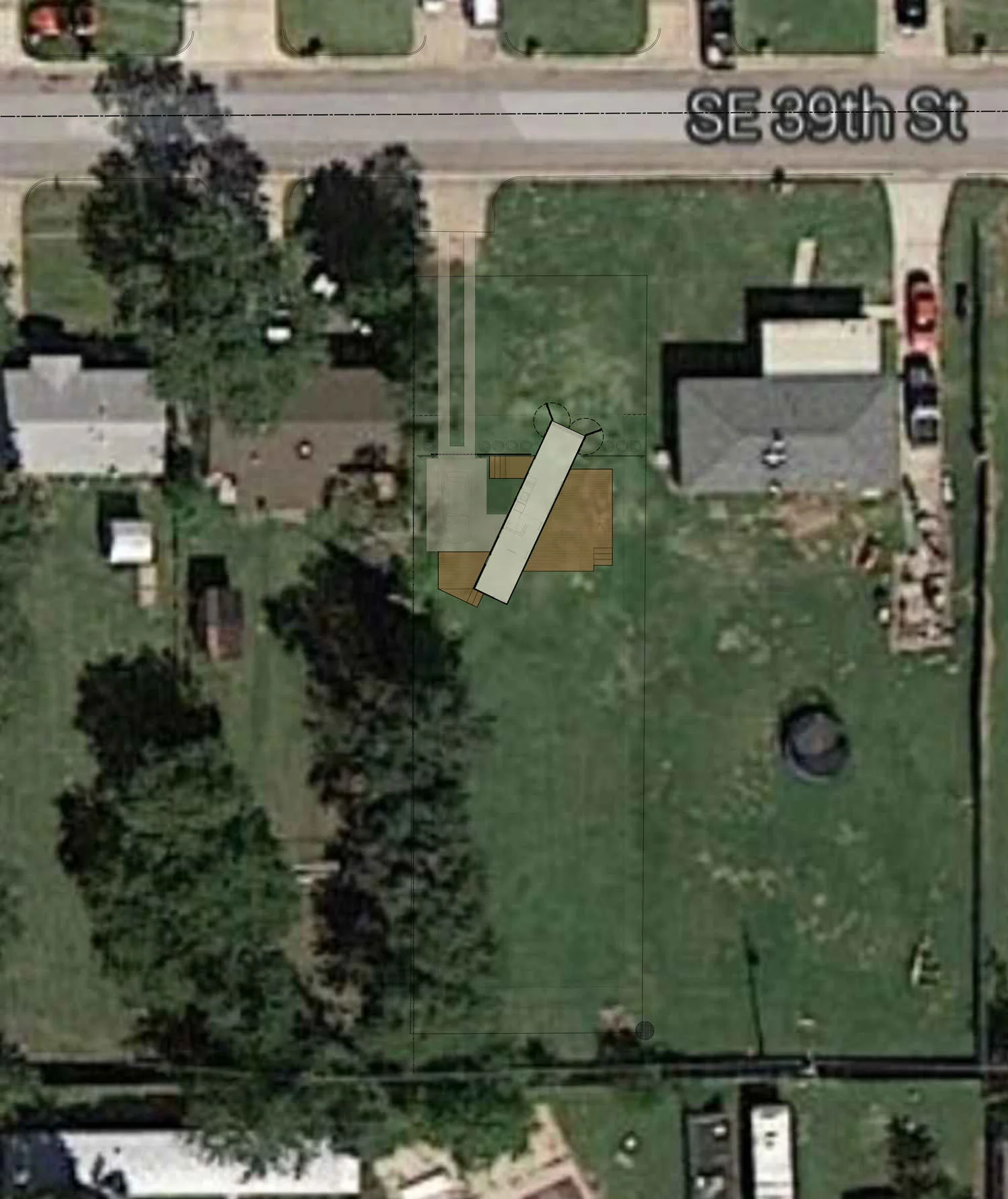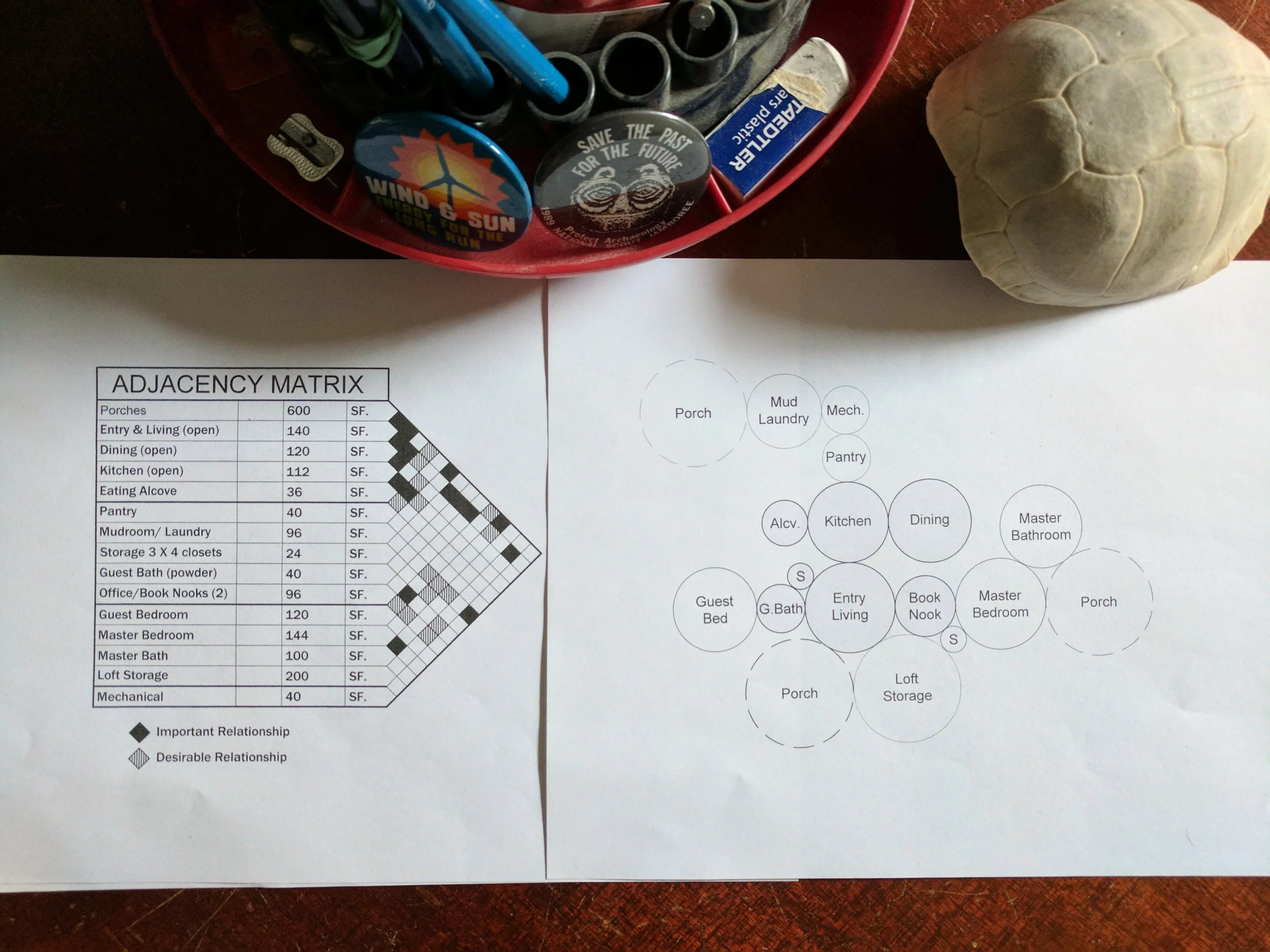Green Architecture
You may think that you know green architecture when you see it, but you might be wrong. I hope to expand your thinking. Sometimes the “image” surpasses reality, and the ultra-modern and high-tech costs us more, both environmentally and financially, than simple, old-school rationale.
The truth is we need both new and old, and they need to work together. Existing buildings can be upgraded with modern materials and technology, and new construction can follow time-tested traditions. The trick is to know when to apply these principles, in your unique situation.
Look Back & Move Forward
Green architecture must be first consider the past, and look roots of your area’s vernacular style and it’s historic architecture. Why? Before mass industrialization, electricity, and air-conditioning, buildings were built from renewable, locally-sourced materials, and designed to be naturally comfortable.
Using these strategies, along with our best modern technologies will yield the most energy efficient, and stylistically appropriate design in any location.
Whole Building Design
Green architecture goes way beyond designing for efficiency, aesthetics, or first cost. It is important to consider buildings and their surrounding ecology as a whole.
The whole building design approach begins with a high-level view of your building's context. Along local building traditions, we must consider the building site, available infrastructure, local climate, occupant needs, and budget.
Whole building design examines a building as if it were a single, living organism. Working with an integrated team of professionals, architects assess how each building system can be optimized for efficiency, health, and delight over the life-cycle of the building.
Your Living Footprint
What fits your needs? Do you want to move back into town or live off the grid? Do you see yourself retrofitting an existing property that you love, or building a new home that is just right? My goal is to help you become more conscious today, live fuller lives, and leave a better world for generations to come.
Green Heart Town
Recently we began a series on toxic building materials. Many building products found in both old and new homes are not good for us. They can negatively affect our indoor air quality, cause long-term health conditions, or even worse. Since these materials pose a problem that affects almost everyone, let us arm ourselves. In following are some powerful tools to help identify problem building materials.
Believe it or not, all the hazardous, toxic materials in our homes are not under the kitchen sink or on the top shelf in the garage. Toxic building materials are a problem that affects almost everyone, and it is hard to know what to avoid. These products are right under our nose and everywhere we turn! So, how do we protect ourselves and our families?
Over the past century, our methods of construction have become increasingly more reliant on the products of mass-production, the free market economy, and rash scientific research. Many of the building materials we use today are both unhealthy and unsustainable. I shudder to think how we might have wrapped ourselves in products that are literally killing us!
Want a simple equation to make the places you love stronger? Do you want to better understand your place in the world and leave it better for the next generation? Maybe you are interested in a more sustainable built environment, including green architecture, sustainable planning and historic preservation. If so, then I began this blog for you.
I tend to think of our natural environment as both a gift and a resource. It gives us everything we need. Unfortunately, modern culture appears to be causing more negative impacts than positive. Do you see this too? What if we could work to lighten our environmental footprints while also strengthening our communities? This may be possible with a simple shift in thinking.
In my tour of the 2017 Solar Decathlon, Team Maryland was my favorite. Their project called reACT (ie. Resilient Adaptive Climate Technology) proved to me that a sustainable future needs to merge indigenous/cultural traditions along with modern technology. This is not just about energy either. Even though the architecture and engineering were exceptional in this design, the incorporation of cultural traditions gave the house much more impact than the rest of the entries at the Solar Decathlon.
During my tour of reACT, I spoke with some of the team and learned about the Native American philosophy called the "7th Generation Principle". This simply means that we should think about our future descendants 7 generations from now (or about 140 years) and honor them by leaving the world better.
The Solar Decathlon is a competition where college teams combine beauty and technology to build high-performance houses powered by the sun. Held every other year, this international competition is the place where we become collectively smarter about high-performance solar homes - thanks to the best and brightest college students from around the world.
At the University of Oklahoma College of Architecture, I first got the itch for sustainable, high-performance design. I was taught that architecture should be a machine for living in balance with nature, and a marriage between ecology and technology.
Although the Solar Decathlon began while I was in college, it was usually held in far-away Washington D.C. and it was just too far away to attend. This year the U.S. Department of Energy moved the Solar Decathlon in Denver, Colorado for the first time. I mentioned it once to my wife while feeding our toddler twins, and she must have seen something in my eye when I said that I would love to go and see the event. She later surprised me with airplane tickets and my heart leaped at the chance to go.
Last time we shared the list of work items included in the Scope of Work for the application for Certificate of Authority (CA). After leaving from our initial meetings with the City’s Historic Preservation (HP) staff and Code Enforcement inspector, we had a plan. Since the deadline to submit for that month’s HP Commission meeting was very close at hand, we submitted a partially completed application. Thank you for the nice trick HP staff! We were ready to get the ball rolling.
American culture has rejected sustainable community development for too long. Even though many of us want make our community stronger, the historic heart of our towns are often weak and perforated - due to the sins of our fathers. Some of us are guilty too! Like a dead whale launched to the beach by a tidal wave, many of our communities' best properties lie broken, abandoned, and steadily decaying. How did things get this way?
Through my work as the staff architect for the Oklahoma Main Street Program, I have come to find resonance inside the bowels of the past. Often far from revitalized, our historic downtowns broadcast your town’s self-concept - just like a neon sign.
I grew up with camping as an integral part of life - from staying at deer camp to many trips through Scouting as long as 30 days out. There have been too many overnights to count, including more than a few spent sleeping in high places. Being up in the mountains above tree-line, or on the side of a sheer cliff face is often called a bivouac (or “bivy”) by climbers. Although far from comfort, these places award a magic that cannot be found in more civilized places. You only bring the absolute necessities, which allows time to think, reflect, and live in the moment.
Last week began a series on renovating the worst house on the block in Oklahoma City's historic Mesta Park neighborhood. Once the property was purchased, the new owners and I met to conduct a damage assessment and form a game plan. Delayed maintenance, inappropriate materials/retrofits, and apathy are three plagues upon under-appreciated historic properties, and this one suffered from all three!
But, what the home lacked in physical condition it made up for in location. This neighborhood and its surrounding walk-shed are becoming more revitalized and vibrant by the day. At the center of the neighborhood lies Pearle Mesta Park. You can see this common green space and the the well-maintained children's play equipment from the front porch. Score!
When some close friends bought the worst home on the block in an up-and-coming historic district, they called me. They are a wonderful young couple that has made their business breathing new life into older, often neglected homes. Even though they had remodeled dozens of other properties before, this historic home renovation was going to be their toughest one yet.
“Larry we are thinking of buying a 1926 residence in Mesta Park. It has loads of potential, but man, it’s rough!”
This is week 4 - and the last post in our series - covering Oklahoma City’s first shipping container residence. Last week we looked at our unique foundation design, touched on shipping container anatomy, and looked at container modifications. I shared information about the homeowner/developer and his website. This week we are picking up where we left off and doing something special.
This week, I wanted to share an in-person interview with Josh McBee, our shipping container homeowner and owner of High Cube Industries, LLC.
This is week three covering Oklahoma City’s first shipping container residence. In last week's post we looked at how the home was positioned on the site, peeked at some interior pictures, and discussed the concepts of both minimalism and rightsizing. Whew!
This week, I want to move to the exterior and reveal a few more facets of this container design. I hope to share some insight into how building with containers must be approached differently from the ground up. I also want to introduce you to the owner and share more about his vision for working with shipping containers in the future.
Welcome back! We began covering the design of this Oklahoma City shipping container home in last week's post. This was the first container home permitted by the City of Oklahoma City when we filed in 2014, and the first shipping container design either the property owner or myself had experienced.
As an architect, it is always a challenge to put myself into the mind of my client. During the Pre-Design phase, I get to ask a lot of questions and get to know the owner.
Transferring another person’s vision and allowing room for their identity to thrive is what it takes to design a home. This is harder than you might imagine, but it is very rewarding when you get it right! Serving another person in this way is not a one way street, and the best residential designs are a product of a team effort.
Call the energy retrofit doctor! Historic and existing buildings may look alright on the outside, but they could be a lot more energy efficient. Don't get me wrong; they have potential. Through the years, these properties have often been updated and remodeled, usually to address particular issues, without considering effects on whole-building energy efficiency. We tend to compartmentalize our homes, and changes to them reflect this paradigm. In the past, we many have needed more space, so we built an addition or enclosed a porch. A room got too hot or cold, so we installed an A/C unit or baseboard heater. You might live in a house with these kinds of alterations.
This kind of thinking allows for quick comfort and cheap solutions (in the short-term) but does improve the property value or allow it run at its best.
Shipping containers belong in a dark, modern version of Dwell magazine featuring Frankenstein’s metro-modular castle. These corrugated units of space are all the rage in print, but they are underrepresented in reality. Point blank, there were no shipping container homes in the Oklahoma City metro in early 2014. That is when I received an email from a childhood friend.
He had heard that I was an architect practicing sustainable design and he wanted to team up to do something new. He had just returned to Oklahoma after living out west and in Asia for several years. Through his travels, he had learned a lot about living lightly and found that a minimalist lifestyle suited him well. He wanted some help designing a small house using recycled shipping containers as the main structure. Sounded interesting!
Preservation Future Tense” was the theme for Oklahoma’s 29th Annual Statewide Preservation Conference held in Oklahoma City. In partnership with our State Historic Preservation Office, the Oklahoma Main Street Program invited James Lindberg, Senior Director of the Preservation Green Lab (PGL) to speak at the closing Plenary Session. Since 2009 PGL, a part of the National Trust for Historic Preservation, has authored some of the most current and forward-looking sustainable preservation research ever done.
Through reports such as The Greenest Building: Quantifying the Environmental Value of Building Reuse, PGL is outlining how historic preservation
This marks our first Monday post. In addition to the backbone topics on Thursday, I hope you will look forward to some periodic "fieldwork" related updates.
My goal for these Fieldwork posts is to share my perspective and provide practical information just for you. Live-streaming an overview of the design process of the Red River Passive House is an example. There will be a lot of questions along the way, so for your part, I only ask for a little feedback. Sound okay?
Last week we began discussing the Pre-Design (aka predesign) process currently underway for a high-performance residential design unfolding in the Red River Valley of Texas. So, why share the process with you?
My hope is that “live-streaming” the architectural design process will serve us both. Writing provides reflection and adds surety to my decisions. I also know that involving others in the design process is a great way to reveal additional opportunities, and avoid missteps.
There are some places that take a long journey to reach, and there are places that have always been there waiting to be discovered. This is sense of how I felt last week when Lucas Sustainable was hired to design our first Passive House.
For several weeks prior, a wonderful property owner and I have been working to assess our fit as a team, and considering the prospect of this kind of undertaking.
For a project such as this one communication should be open and transparent from the very beginning. Especially, for such a beautiful piece of land, nestled in the rich, verdant Red River Valley.
Basic weatherization is a simple approach to improve comfort, energy efficiency, air quality, and the durability of an existing building. Weatherization is composed of two primary measures: Air sealing and insulating. Both are important for improving energy efficiency, but pursuing airtightness should take precedent.
Existing buildings just don’t stand a chance. Every month many glossy architecture magazines hit the newsstands, arriving in checkout lines like a plague of locusts. Anyone who loves beauty and design can’t help but shoot a quick glance and read the headlines. We can’t help but peek. As Americans, we are programmed to desire, want, and spend.
Vernacular architecture (aka. traditional architecture) is a topic we are going to be referring back to often. “Looking back before moving ahead” is a principle that any sustainable designer should cherish. Not only are our communities’ histories informative, they are also treasures that can enrich our lives. We can choose to become part of the great story of our community, and leave it stronger.
There is a timeless way of building and we have forgotten it!
The historic vernacular architecture is the rudimentary construction done by your town’s original builders, with the traditions, skills and resources they had at hand. You might also think of it as your town’s architecture, before architects.
This blog is about creating a Green Heart Town: Renewing Your Home, Neighborhood and Downtown from the Inside Out.
For over a year, I considered the right direction for this blog. I could use the "I have never blogged before" excuse, but the truth is I'm a slow poke. One thing I knew for certain is...
Do you want to better understand your place in the world and leave it better for the next generation? Or maybe you are interested in green architecture, sustainable planning or historic preservation. If so, this blog might be for you.
Note: Please leave questions and comments in the space after each post. I look forward to the conversation!
If you have an ideas for a post, I would love to hear them! Send a message from the Contact Page.



























Theory has been fundamental to the practice of architecture since ancient times. A long-accepted theory of architecture centers on the coexistence of three factors: firmness, commodity, and delight (Latin: firmitas, utilitas, and venustas). A high-powered ancient Roman architect, engineer, and thinker named Vitruvius created this theory, but in practice, I think he missed something.
For posterity’s sake, it is true that good architecture must possess this triad containing structural stability, appropriate spatial accommodation, and attractive appearance, but…